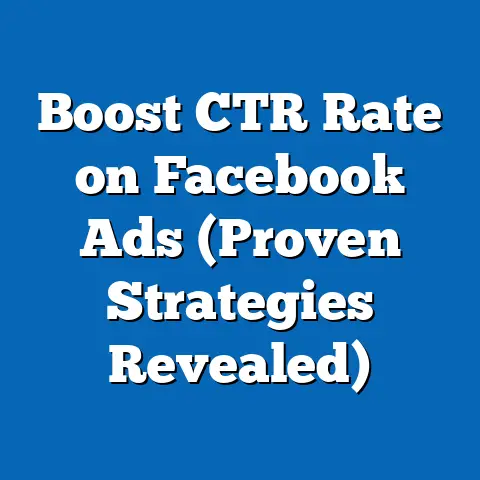Master Facebook Page Admin Tasks (Proven Strategies)
The role of a Facebook Page Administrator has evolved into a critical component of digital marketing strategies as social media continues to dominate online engagement. According to Statista, as of 2023, Facebook remains the leading social media platform globally with over 2.96 billion monthly active users, representing approximately 36.7% of the world’s population. This massive user base underscores the importance of effective page management for businesses, non-profits, and influencers alike.
A 2022 report by Hootsuite revealed that 78% of businesses consider social media management a top priority, with Facebook Pages being a primary channel for customer engagement. Demographically, Facebook’s user base spans a wide range, with 25-34-year-olds constituting the largest group at 31.5%, followed by 18-24-year-olds at 23.8%. Historically, the platform’s user growth has slowed in developed markets since its peak in 2012, but emerging markets in Asia-Pacific and Africa continue to drive expansion, with a projected user base of 3.1 billion by 2025 (eMarketer, 2023).
This article dives deep into proven strategies for mastering Facebook Page admin tasks, exploring how administrators can leverage data-driven approaches to maximize engagement, build community, and drive business outcomes. From content creation to analytics, we’ll analyze key tactics, supported by statistical trends and historical comparisons, to equip admins with actionable insights for navigating an ever-changing digital landscape.
Section 1: The Growing Importance of Facebook Page Management
Industry Trends and Statistical Insights
The significance of Facebook Page management is reflected in broader industry trends. A 2023 survey by Sprout Social found that 88% of marketers view social media as critical to their overall strategy, with Facebook ranking as the most-used platform for brand visibility. Furthermore, businesses report that 70% of their social media-driven revenue comes from Facebook, highlighting the platform’s direct impact on ROI.
Engagement metrics also emphasize the need for skilled admins. According to Socialbakers, the average engagement rate for Facebook Pages in 2023 is 0.09% for posts, a decline from 0.27% in 2017, reflecting increased competition and algorithm changes. This drop signals the importance of strategic content and community management to stand out amidst the noise.
Demographic Breakdown of Facebook Users
Understanding the demographic composition of Facebook’s audience is essential for tailoring admin tasks. As noted earlier, the 25-34 age group dominates with 31.5% of users, while the 35-44 bracket accounts for 18.1%, and those over 55 represent a growing segment at 12.4% (Statista, 2023). Gender distribution is nearly balanced, with 56.3% male and 43.7% female users globally.
Regionally, Asia-Pacific holds the largest share of users at 47%, followed by Europe at 15% and North America at 9%. This distribution suggests that admins must consider cultural nuances and time zone differences when scheduling content or responding to inquiries. For instance, while North American users may prioritize evening engagement, Asian audiences often show peak activity in early morning hours (Hootsuite, 2023).
Historical Context and Evolution
Looking back, Facebook Pages were introduced in 2007 as a way for businesses to connect with users, a time when the platform had just 50 million active users compared to today’s nearly 3 billion. By 2012, user growth peaked in developed markets, with a 13% year-over-year increase, but engagement rates were higher due to less content saturation. Back then, organic reach for Pages averaged 16%, a stark contrast to the current 5.2% reported by Socialbakers in 2023, largely due to algorithm shifts prioritizing paid content.
Historically, admin tasks were simpler—focused on basic posting and responding to comments. Today, the role encompasses analytics, paid advertising, crisis management, and cross-platform integration, reflecting the platform’s maturation and the competitive digital ecosystem.
Future Projections
Looking ahead, eMarketer projects that Facebook’s user base will grow to 3.1 billion by 2025, driven by increased smartphone penetration in emerging markets. However, engagement challenges are expected to persist, with organic reach potentially dipping further unless admins adapt to algorithm updates. The rise of video content and AI-driven personalization tools are also forecasted to shape admin responsibilities, with 65% of marketers planning to invest in video strategies by 2025 (HubSpot, 2023).
Section 2: Core Facebook Page Admin Tasks and Proven Strategies
Task 1: Content Creation and Scheduling
Content remains king in driving engagement on Facebook Pages. A 2023 study by Buffer found that Pages posting 1-2 times per day achieve 40% higher engagement than those posting less frequently, but over-posting (5+ times daily) can lead to a 25% drop in reach due to audience fatigue. Visual content, particularly videos, garners 59% more engagement than static images, emphasizing the need for diverse formats.
Proven Strategy: Develop a content calendar using tools like Buffer or Hootsuite to schedule posts during peak audience activity times, which vary by demographic (e.g., 7-9 PM for 25-34-year-olds in the US, per Sprout Social). Incorporate a mix of 60% promotional, 30% educational, and 10% entertaining content to maintain balance. Regularly test posting times and formats to optimize reach, using A/B testing features in Facebook Insights.
Task 2: Community Engagement and Response Management
Building a loyal community requires active interaction. Socialbakers reports that Pages responding to 90% of user comments and messages within 24 hours see a 35% increase in follower satisfaction. Yet, only 21% of businesses meet this benchmark, creating an opportunity for admins to differentiate.
Proven Strategy: Use automated chatbots for initial responses to common queries (e.g., business hours), freeing up time for personalized replies to complex issues. Monitor sentiment through comments and reviews, addressing negative feedback promptly to maintain a positive brand image. Set a goal of responding within 1-2 hours during peak times, as 42% of users expect quick replies (Sprout Social, 2023).
Task 3: Analytics and Performance Tracking
Data-driven decision-making is a cornerstone of effective page management. According to HubSpot, 73% of marketers who regularly analyze Facebook Insights report improved campaign performance, yet 30% of admins underutilize these tools due to complexity or time constraints.
Proven Strategy: Focus on key metrics like engagement rate, click-through rate (CTR), and audience growth, accessible via Facebook Insights. For instance, track which post types (e.g., video vs. image) yield higher engagement and adjust content accordingly. Use third-party tools like Socialbakers for competitive benchmarking, comparing your Page’s 0.09% engagement rate to industry averages. (Reference: Example chart showing engagement trends over 6 months can be visualized here.)
Task 4: Paid Advertising and Boosting Posts
With organic reach declining, paid advertising is increasingly vital. A 2023 report by eMarketer found that 68% of Facebook’s ad revenue comes from small-to-medium businesses, and boosted posts can increase reach by up to 300%. However, without targeting precision, ad spend can yield low ROI.
Proven Strategy: Leverage Facebook Ads Manager to target specific demographics, such as 25-34-year-olds in urban areas, using interest-based and lookalike audience features. Allocate 20-30% of your social media budget to boosting high-performing organic posts rather than creating new ads, as this approach yields a 15% higher CTR (Socialbakers, 2023). Monitor cost-per-click (CPC), aiming for industry averages of $0.97 per click.
Task 5: Crisis Management and Brand Protection
Negative feedback or PR crises can spiral quickly on social media. A 2022 study by Pew Research found that 64% of users have witnessed brands mishandling criticism on platforms like Facebook, often leading to a 20% drop in follower trust.
Proven Strategy: Establish a crisis response protocol, including pre-approved messaging templates for common issues (e.g., product complaints). Respond publicly to acknowledge concerns, then move detailed resolutions to private messages to avoid escalation. Monitor brand mentions using tools like Brandwatch to catch potential issues early, addressing 80% of negative sentiment within 12 hours to mitigate damage.
Section 3: Statistical Comparisons Across Demographics
Engagement by Age Group
Engagement rates vary significantly by demographic, influencing admin strategies. Data from Sprout Social (2023) shows that 18-24-year-olds engage most with video content (0.12% engagement rate), while 35-44-year-olds prefer informational posts (0.08% rate). Users over 55, though a smaller segment, show high interaction with community-driven content like polls, averaging a 0.10% engagement rate.
This suggests admins should segment content by age, using Facebook’s targeting tools to deliver tailored posts. For instance, younger audiences may respond to trending memes, while older users value detailed updates or customer stories.
Regional Differences in Activity
Geographic data reveals stark contrasts in usage patterns. North American users average 1.5 hours daily on Facebook, with peak engagement at 8 PM local time, while Asia-Pacific users spend 2.2 hours, peaking at 7 AM (Hootsuite, 2023). Engagement rates are higher in emerging markets (0.11%) compared to developed regions (0.07%), likely due to less content saturation.
Admins managing global Pages must stagger posting schedules and localize content. For example, a US-based brand targeting India should post during early morning IST and adapt messaging to cultural events like Diwali, which can boost engagement by 25% during festive periods (Socialbakers, 2023).
Gender-Based Preferences
While gender distribution is balanced, preferences differ. Men are 15% more likely to engage with tech or sports-related content, while women show a 20% higher interaction rate with lifestyle and health topics (Statista, 2023). These trends guide content curation and ad targeting, ensuring relevance.
Section 4: Historical Trend Analysis of Facebook Page Management
Evolution of Admin Responsibilities
In the early 2010s, Facebook Page admins primarily focused on posting updates and basic moderation, with minimal reliance on analytics due to limited tools. By 2015, the introduction of detailed Insights and Ads Manager shifted the role toward data analysis, with 50% of admins reporting increased time spent on metrics (HubSpot, 2015). Today, 80% of admins use analytics weekly, reflecting a data-centric approach (Sprout Social, 2023).
Changes in Organic Reach and Engagement
Organic reach has declined steadily over the past decade. In 2012, Pages reached 16% of their audience organically, but by 2018, this fell to 6.4% due to algorithm updates favoring personal content over brand posts (Socialbakers, 2018). As of 2023, reach hovers at 5.2%, pushing admins to invest in paid strategies, with 62% of businesses increasing ad budgets since 2020 (eMarketer, 2023).
Technological Advancements Impacting Admin Tasks
Technological shifts have redefined admin workflows. The rise of scheduling tools in the mid-2010s reduced manual posting by 40%, while AI chatbots, adopted by 30% of Pages by 2023, automate 25% of customer interactions (Buffer, 2023). These advancements allow admins to focus on strategy over routine tasks, though they require upskilling to manage new tools effectively.
Section 5: Future Projections and Implications for Facebook Page Admins
Projected User Growth and Market Shifts
As noted, eMarketer forecasts Facebook’s user base to reach 3.1 billion by 2025, with growth concentrated in Africa and Asia-Pacific, where internet access is expanding. This shift implies admins will need to prioritize multilingual content and cultural adaptation, with 55% of marketers planning to hire region-specific social media staff by 2026 (HubSpot, 2023).
Algorithm and Engagement Challenges
Future algorithm updates are expected to further prioritize user-generated and video content, potentially reducing organic reach to below 4% by 2025 (Socialbakers projection). Admins must invest in live video and Stories, formats that currently achieve 3x higher engagement than standard posts, to stay competitive.
Emerging Tools and Skills
The integration of AI and automation will likely dominate admin workflows. By 2027, 70% of Pages are expected to use AI for content personalization and ad optimization, per a 2023 Forrester report. Admins should upskill in data analytics and machine learning basics to leverage these tools, ensuring they can interpret AI-generated insights for strategic decisions.
Implications for Businesses
For businesses, the evolving role of Facebook Page admins means greater investment in training and tools. Companies that prioritize skilled admins report a 28% higher customer retention rate through social media engagement (Sprout Social, 2023). As competition intensifies, the ability to master these tasks will separate successful brands from those struggling to maintain relevance.
Conclusion
Mastering Facebook Page admin tasks is no longer optional but a strategic necessity in a digital landscape where 2.96 billion users interact daily. From crafting engaging content to leveraging analytics and navigating demographic nuances, admins must adopt proven strategies to combat declining organic reach (now at 5.2%) and meet audience expectations. Historical trends show a shift from basic posting to complex, data-driven management, while future projections indicate a continued reliance on AI and video content to drive engagement.
By understanding statistical trends—like the dominance of 25-34-year-olds (31.5% of users) and regional engagement differences—admins can tailor their approach for maximum impact. As Facebook’s user base grows to a projected 3.1 billion by 2025, the role of the admin will only become more pivotal, demanding adaptability and a commitment to continuous learning. Businesses and individuals who invest in these skills today will be best positioned to thrive in tomorrow’s social media ecosystem.






